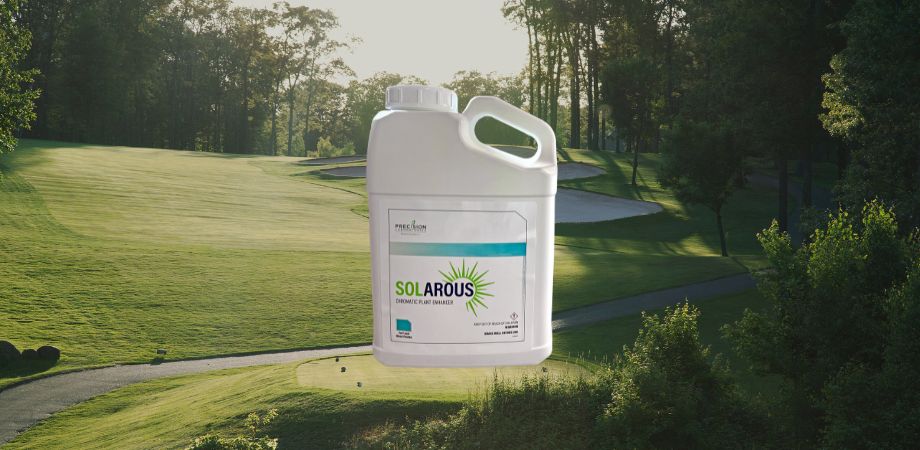Having beautiful, healthy turf isn’t easy, but it becomes a lot harder when the Annual Bluegrass Weevil (ABW) shows up. This tiny pest—only about 1⁄8 inch long in adult form—can cause big problems. Let’s dive into the problems ABWs pose and explore some control strategies.
Understanding the Annual Bluegrass Weevil
The ABW, scientifically known as Listronotus maculicollis, is a small black beetle approximately 1⁄8-in long that feasts on turfgrasses like bentgrass and poa annua—turfgrasses commonly used on greens, tees, and fairways. ABWs can be as hard to spot as they are to control. Season-long management is required to control ABWs as they are present throughout the year in different stages of growth. Before we dive into control, though, we’ll explore how to spot them and the damage they cause.
Diagnosing and Scouting an ABW Problem
The first signs of ABW damage will be dry spots on your greens, tees, and fairways as well as a general thinning of turf.
In order to diagnose whether you have a weevil problem or a root disease like dollar spot, you’ll want to find the edges of the dry spots mentioned previously and try to locate adult ABWs visually crawling across the surface. It’s going to be next to impossible to find them in overwintering sites and taller mown areas due to foliage, so finding a spot on the putting green, tees, or another maintained area is your best bet. If you locate the beetles, it’s time to take a journey to the center of the turf.
Before we go further, it’s important to note that tackling ABW is going to be a very hands-on task, so glove up. Grab a cup cutter and take a look through the thatch and crown areas of your turf for weevil grubs (larvae). The white-colored, legless larvae will have a pronounced brown head and vary in length from about 1 millimeter to ⅙ inch.

Scouting on the front end before treatment is very important because it will let you know when they’re moving into the area and what you’re up against. Knowing when weevils are moving onto tees and greens in the spring is important because there will be multiple generations (both larvae and adults—they don’t all develop at the same time like some other insects, their life cycles vary) throughout the year. ABW larvae go through five instars: The first three feed within the stem and then they move down and start feeding on the crown. So, you can have larvae feeding in the stem and adult weevils feeding in the crown.
Scouting Options
When it comes to monitoring and taking a census, pitfall traps and soap drenches are two effective ways to find ABWs:
- Soap drenches involve mixing one to two ounces of a lemon-scented soap with five gallons of water. Pour it in areas and the adult weevils will “bubble up.” This will only be effective in areas that are mowed relatively low, however.
- Pitfall traps are traps placed in fairway areas near overwintering sites designed to capture adult weevils. Often constructed out of PVC pipe and soda bottles, it’s a homemade way of detecting ABWs and their movement that would make MacGyver proud. Learn more about pitfall traps via NC State.
Controlling Annual Bluegrass Weevils
If you know you’re going to have a problem with weevils or you’ve dealt with them in the past, preventative control is going to be the best option. Breaking out neonicitinoids, synthetic pyrethroids, and spinosad products will do the trick for adults.
When it comes to product options, Alucion, the only non-restricted use pyrethroid labeled for golf courses, and Triple Crown will control ABWs. Durentis, Acelypryn, Tetrino, and Matchpoint can also be used preventatively. Be sure to switch chemistries to prevent resistance.
Curative Control Options
If you have an issue with ABW and need a curative option, synthetic pyrethroids will do the trick. You can also go for Matchpoint (spinosad) or Arena (clothianidin). Whichever route you choose, your ATS rep will be here when you need advice, products, and a more in-depth approach to integrated pest management. If you’re ready to tackle ABWs on your course this spring, reach out.












